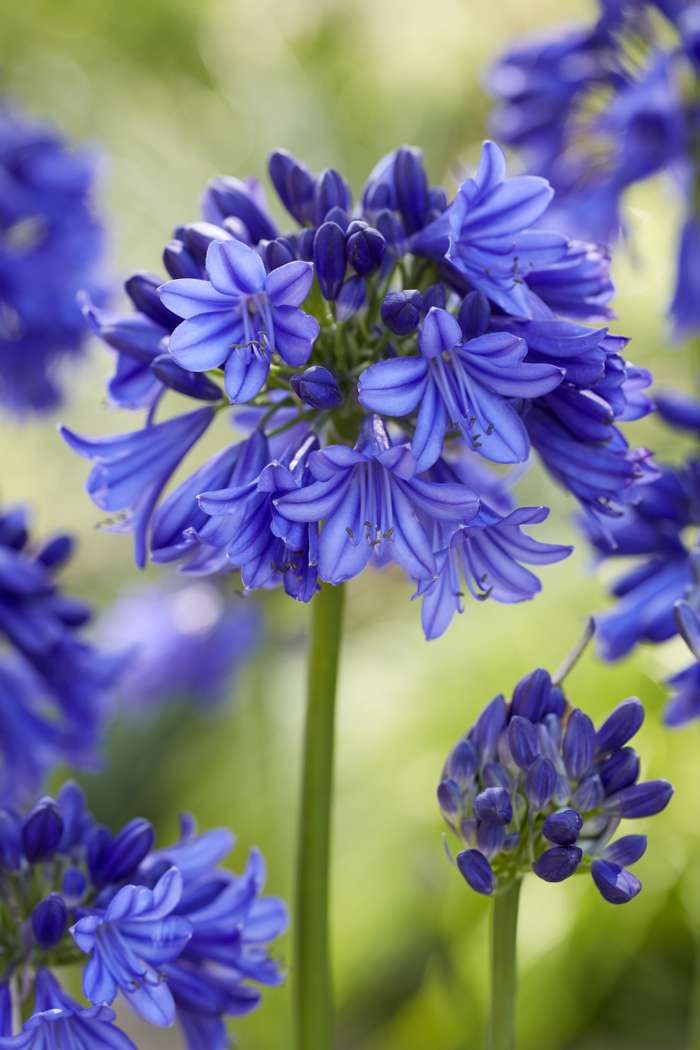Agapanthus Propagation: Tips for Expanding Your Plant Collection
Agapanthus Propagation: Tips for Expanding Your Plant Collection
Blog Article
Letting Loose the Secret to Effective Agapanthus Growing: Tips and Techniques for a Flourishing Yard
In the world of gardening, growing agapanthus effectively requires a critical technique that includes various elements of plant treatment. By comprehending the subtleties of agapanthus farming, one can create an environment where these plants flourish and grow generously.
Planting Agapanthus: Best Practices
When growing Agapanthus, correct soil prep work is vital for guaranteeing effective development and development of these lovely flowers. Agapanthus, commonly called Lily of the Nile or African lily, prospers in well-draining dirt with a slightly acidic to neutral pH degree - Agapanthus. Before growing, it is important to amend hefty clay soils with organic matter such as garden compost or peat moss to boost water drainage and supply important nutrients for the plants
To plant Agapanthus, select an area that obtains full sunshine to partial color, as this will certainly promote healthy and balanced development and plentiful flowering. Dig a hole twice the diameter of the plant's origin sphere and position the Agapanthus at the same depth it was previously expanding. Gently backfill the hole with dirt, weighing down firmly to eliminate any kind of air pockets around the origins.
Water the freshly grown Agapanthus completely and remain to keep the soil equally damp, specifically throughout the plant's energetic expanding season. Agapanthus. Applying a balanced fertilizer once a month can better sustain the plant's development and flowering. By following these best techniques for growing Agapanthus, you can produce a spectacular display of these captivating blossoms in your garden
Suitable Soil Issues for Agapanthus
For ideal development and flowering success of Agapanthus plants, ensuring the soil conditions are excellent is crucial. Agapanthus chooses dirt that is abundant in nutrients, so integrating a balanced fertilizer throughout the growing period can promote healthy and balanced development and dynamic blooms.

Watering and Feeding Tips
To ensure healthy development and dynamic blooms, correct watering and fertilizing methods are important for successful Agapanthus cultivation. Agapanthus plants profit from regular watering, specifically during the expanding season. It is advised to water deeply once a week, making certain the soil is damp but not soaked. During hot weather or in pots, even more regular watering might be needed to stop the dirt from drying totally.
When it concerns fertilizing Agapanthus, a balanced plant food with equivalent parts nitrogen, phosphorus, and potassium can be applied in the spring to promote healthy and balanced growth and blooming. Slow-release fertilizers are perfect for providing nutrients slowly over a prolonged duration. Avoid over-fertilizing, as this can cause excessive vegetation development at the cost of blossoms.
Furthermore, incorporating raw material like garden compost into the dirt can boost nutrient degrees and improve dirt structure, helping in the overall wellness of the Agapanthus plants. By following these watering and feeding pointers, gardeners can guarantee their Agapanthus plants prosper and produce magnificent screens of flowers.
Pruning and Deadheading Strategies
Proper trimming and deadheading techniques play a crucial function in maintaining the health and wellness and aesthetic appeals of Agapanthus plants, matching the crucial methods of watering and feeding for successful growing. Trimming Agapanthus involves eliminating spent blossom heads, dead or yellowing fallen leaves, and overall shaping of the plant to advertise much better growth. Deadheading, the procedure of removing faded flowers, not just enhances the plant's check this site out appearance but also urges further flowering.
When deadheading Agapanthus, it is advisable to clip off the click for info blossom stem at the base using sharp, clean shears. This procedure redirects the plant's energy from seed production back into root and foliage development, promoting a much healthier and more robust plant. Routine deadheading can expand the blooming period of Agapanthus and stop self-seeding, which can bring about overcrowding.
In terms of pruning, Agapanthus typically take advantage of a light trim after blossoming to clean up the plant and motivate fresh growth. Cutting down the spent blossom stems and removing any dead or damaged foliage helps maintain the plant's vigor and overall look. Nevertheless, it is important to prevent reducing right into the crown of the plant, as this can compromise its health and wellness.

Protecting Agapanthus From Vermins and Diseases
Carrying out effective bug and disease administration strategies is critical to protecting the wellness and vigor of Agapanthus plants in farming. One typical pest that affects Agapanthus is the Agapanthus borer, a caterpillar that tunnels right into the plant, creating damage to the fallen leaves and blossoms.
In enhancement to parasites, Agapanthus are see it here at risk to conditions such as root rot and fungal leaf spots. By staying vigilant and addressing pest and condition concerns promptly, gardeners can aid their Agapanthus flourish and thrive.

Final Thought
Finally, effective growing of agapanthus requires proper planting methods, ideal dirt problems, ample watering and fertilizing, routine pruning and deadheading, and protection from illness and bugs. By complying with these ideas and methods, garden enthusiasts can ensure a flourishing garden loaded with lovely agapanthus flowers. Agapanthus. Remember to keep regular treatment and attention to detail to advertise the health and wellness and longevity of these stunning plants
When planting Agapanthus, proper soil prep work is necessary for making sure effective growth and growth of these stunning flowers.Water the newly grown Agapanthus extensively and continue to keep the soil uniformly wet, especially during the plant's energetic growing season.For optimal development and flowering success of Agapanthus plants, making sure the dirt problems are excellent is vital. When transplanting or planting Agapanthus, make certain the dirt is well-prepared to provide the needed foundation for the plants to establish themselves successfully. One typical insect that affects Agapanthus is the Agapanthus borer, a caterpillar that tunnels right into the plant, creating damage to the blossoms and fallen leaves.
Report this page